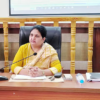In the early 15th century, a curious Italian traveller named Nicolo Conti embarked on a journey that would lead him to Vijayanagara empire. Conti’s vivid descriptions, recorded by Pope’s secretary Poggio Bracciolini, provide us with a fascinating glimpse into the customs, rituals, and grandeur of Vijayanagara during the reign of Deva Raya II.
The traveller calls Vijayanagara as “Bizenegalia.” He mentions that it was a sprawling metropolis nestled near steep mountains, its walls stretching up to enclose the valleys at their base. According to Conti, the city’s circumference was an impressive sixty miles, and it was home to an estimated ninety thousand men fit for military service.
Conti’s narrative provides a window into the religious fervor of the Vijayanagara residents. One of the notable events was the annual procession of the idol through the city. The idol, placed between chariots adorned with richly dressed young women, was the focal point of hymns sung by the faithful. Some devotees, carried away by their faith, undertook extreme acts of devotion, such as throwing themselves under the chariot wheels or suspending themselves by inserting a rope through an incision in their side.
Thrice a year, the city held festivals of great solemnity. These celebrations involved communal bathing, new garments, and days filled with singing, dancing, and feasting. Additionally, large beams adorned with beautiful cloth and manned by pious individuals were erected in the streets. Despite being pelted with fruits by the crowd, these devoted men prayed for divine favor with unwavering equanimity.
Nicolo Conti’s accounts of his travels to Vijayanagara offer a remarkable insight into the grandeur, religious practices, and cultural festivities of Bizenegalia in the early 15th century. Through his eyes, we witness a city at the height of its power and religious devotion, leaving an indelible mark on the historical tapestry of Vijayanagara.


